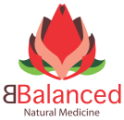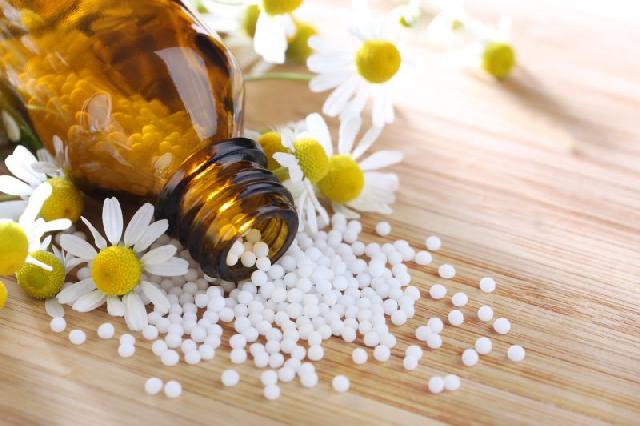While it can scarcely compare in antiquity with Chinese or Indian medicine, homeopathy is the longest established CAM to have arisen in Europe.
It was founded by Samuel Hahnemann (1755-1843), who grew up in Meissen in Germany, received his medical degree in Erlangen in 1779, and died a millionaire in Paris in 1843. During his first fifteen years as a physician Hahnemann struggled desperately to make a living. One day, however, he made a discovery. He started to take regular doses of cinchona or ‘the bark’ (i.e. quinine). This, he said, produced all the symptoms of intermittent fever (malaria) but to a mild degree and without the characteristic rigors of that disease. This led Hahnemann to an idea which was published in 1796 as Essay on a New Principle for Ascertaining the Curative Power of Drugs, which was followed in 1810 by his famous work The Organon of the Healing Art.
Hahnemann believed that if a patient had an illness, it could be cured by giving a medicine which, if given to a healthy person, would produce similar symptoms of that same illness but to a slighter degree. Thus, if a patient was suffering from severe nausea, he was given a medicine which in a healthy person would provoke mild nausea. By a process he called ‘proving’, Hahnemann claimed to be able to compile a selection of appropriate remedies. This led to his famous aphorism, ‘like cures like’, which is often called the ‘principle of similars’; and he cited Jenner’s use of cowpox vaccination to prevent smallpox as an example.
The differences between orthodox medicine and homeopathy could hardly be more vivid. From its beginning homeopathy always began with a long consultation, lasting at least an hour, in which all aspects of the patient’s illness and life were discussed—homeopaths like to stress that they practise ‘holistic medicine’—and the appropriate treatment chosen. In contrast, during the first half of the nineteenth century, when homeopathy was becoming established, orthodox medicine was immersed in the belief that advances in understanding disease could only come from a detailed correlation of symptoms and signs of the sick patient on the ward, and the findings at autopsy: clinico-pathological correlation. As Bichat famously put it put it at the very end of the eighteenth century:
‘For twenty years from morning to night you have taken notes at patients’ bedsides… which, refusing to yield up their meaning, offer you a succession of incoherent phenomena. Open up a few corpses: you will dissipate at once the darkness that observation alone could not dispel.’
Clinico-pathological correlation demanded the understanding of a very long and complex collection of diseases accompanied by heated debates between the contagionists and the anti-contagionists. This was way beyond the comprehension of the general public. Moreover, medical treatment was to a large extent crude and ineffective, consisting largely of potentially dangerous polypharmacy, purging, and profuse blood-letting.
Hahnemann showed no interest in detailed pathology, and none in conventional diagnosis and treatment. He was only interested in the principles of homeopathic medicine which he used to name the illness.
Classical homeopathy was therefore seen by its supporters as an attractively safe system, simple, easy to understand, and centred on the patient as a whole and not on pathological lesions. This goes a long way to explain why homeopathy was popular.
But there was one aspect of homeopathy which, from the time it was first announced in about 1814, led to open warfare between orthodox medicine and homeopathy. This was the result of Hahnemann’s belief that drugs should be given in a dose which only just produced the slightest symptoms of the disease which was being treated. To achieve this aim, Hahnemann diluted his medical preparations to such an astonishing extent that if one assumes that that the substance he employed was completely soluble, by only the fourth dilution the ratio of the medicine to the solution would be 1:100 000 000. The physician and poet Oliver Wendell Holmes (1809-1894) in the USA, always a master of ridicule, said that Hahnemann’s dilution would take ‘the waters of ten thousand Adriatic seas.’
But Hahnemann insisted that homeopathic medicines retained their therapeutic power provided you shook the preparation violently during the process of dilution—a process Hahnemann named as ‘potentization’ by which every homeopathic medicine not only retained or even increased its therapeutic power, but persisted as a ‘dematerialized spiritual force’. To orthodox practitioners this was sheer nonsense.
Hahnemann claimed that by his methods he could cure all or nearly all acute diseases. To make matters worse, he announced in 1828 that all, or nearly all, chronic diseases were caused by ‘the itch’ (scabies).
Whereas Hahnemann claimed that homeopathy could cure all or virtually all diseases, his followers modified these claims in the hope of becoming accepted by orthodox medical practitioners. One of the first institutions devoted to homeopathy was the American Institute of Homeopathy, founded at the end of the nineteenth century, when it seems that ‘a rapprochement between homeopaths and conventional physicians gradually unfolded. Homeopaths adopted new orthodox treatments… while allopaths [regular orthodox physicians] borrowed homeopathic remedies… In 1903, after long antagonism, the American Medical Association… invited homeopaths to join [the Association].’
The Food, Drug and Cosmetic Act of 1939 in the USA allowed homeopathic medicines to be sold openly on the market. Five homeopathic hospitals were founded in Britain, the two largest (in London and Glasgow) having in-patient units. Today the ten most common diseases treated by homeopaths are (in order of frequency) asthma, depression, otitis media, allergic rhinitis (hay fever), headache and migraine, neurotic disorders, non-specific allergy, dermatitis, arthritis and hypertension.
There seems little doubt there has been a remarkable revival of homeopathy since the 1960s and 1970s in many countries, but especially the USA where, in 2002, it was estimated that the number of patients using homeopathic remedies had risen by 500% in the previous seven years, mostly by purchasing over-the-counter remedies. In the USA patients seen by homeopaths tended to be more affluent, more frequently white, present more subjective symptoms, and to be younger than patients seen by conventional physicians.
In Britain a survey by the BBC in 1999 found that 17% of 1204 randomly selected adults had used homeopathy within the past year (this includes homeopathic remedies bought over the counter) and another survey in 1998 estimated that there were 470 000 recent users of homeopathy in the UK. It is likely that most patients in the UK who use complementary medicine are largely middle class and middle aged.



No Comments